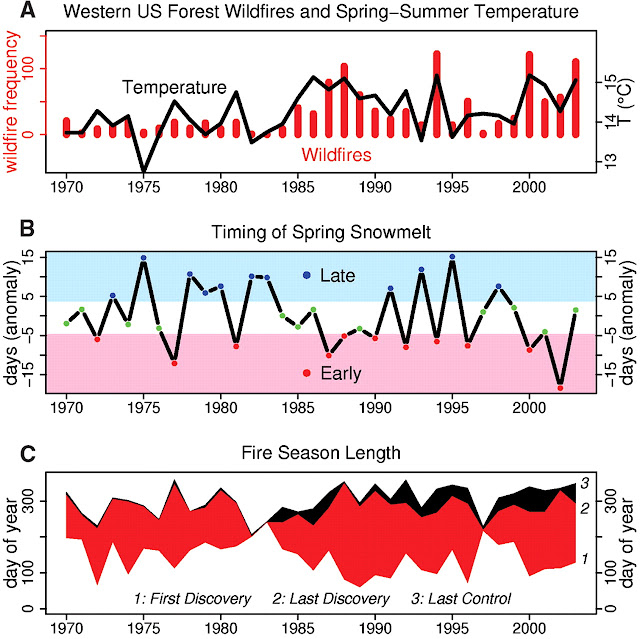Effects of AGW on Wildfires in the Western U.S.

Relationship Between Temperature and Wildfire Frequency, Season Length and Spring Snowmelt This is part 2 of a two-part series on wildfires in the U.S. Here's part 1 , where I look at the evidence for how wildfires have increased in the U.S. By all accounts the relationship between wildfires and climate change is complex. In fact, it's probably fair to say there are to some extent two competing trends globally. Warmer temperatures from increased GHGs lead to more water vapor in the atmosphere which should increase rainfall in some areas of the world. But in more arid climates, like in the western U.S., warmer temperatures can increase aridity. Increased vapor pressure deficit (VPD) leads to decreases in soil moisture; plants dry out and become flammable more quickly, so wildfires can ignite and spread more quickly. This is not to say that AGW actually starts wildfires. Sources of ignition are still predominantly human behavior (as in carelessness with cigarettes and camp fire...